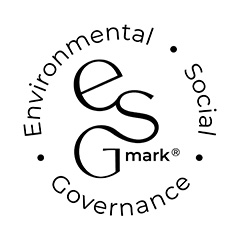Calculating allowable motor vehicle expenses for a business
In addition to claiming tax relief on the running costs of a farmhouse, there are a couple of options available to businesses when claiming allowable motor expenses, and all factors should be considered by a business when choosing which option to take.
Each method of calculating allowable motor expenses are as follows:
Flat rate deductions
The flat rate deduction for motor expenses covers expenditure in respect of the acquisition, ownership, hire, leasing or use of cars, vans or motorcycles used for the purposes of a business’s trade. This enables businesses to calculate their vehicle expenses using a fixed rate per business mile in a tax year.
The amount of relief which can be claimed depends upon the type of vehicle and the level of business mileage.
| Vehicle | Flat rate per business mile |
| Cars and goods vehicles first 10,000 miles | 45p |
| Cars and goods vehicles after 10,000 miles | 25p |
| Motorcycles | 24p |
The above rates cover the cost of buying, running and maintaining the vehicle including fuel, servicing, repairs and insurance. The flat rate also covers depreciation for a vehicle. As a result if a business opts to use the flat rate deduction capital allowances are not available in respect of a vehicle if flat rate expenses are claimed.
The flat rate expense does not however cover incidental expenses associated with a particular journey such as tolls or parking fees. Expenses such as this will be an additional allowable deduction where they are incurred for business purposes.
The above method of computing vehicle expenses is entirely optional, however once a business has adopted the flat rate deduction for a vehicle, it must be applied consistently from year to year for as long as the vehicle remains in the business.
Cash basis
Alternatively, under the cash basis, a business can claim a deduction for the expenditure on acquiring goods vehicles and motor cycles (but not cars).
In addition to the above, a business can actually decide not to claim a deduction based on the cost of goods vehicle or motorcycle, it can claim the flat rate deduction outlined above instead.
Capital allowances
Another option for a business is to claim capital allowances on a vehicle. Alongside this, a business proportion of the actual costs of running and maintaining a vehicle may also be claimed as an allowable deduction when calculating the profits of a business’s trade, alongside capital allowances.
However, it should be kept in mind, that the allowable deduction only relates to the business use of the vehicle in question which would need to be assessed from year to year. This could lead to an administrative headache when trying to differentiate between business mileage and the overall mileage, particularly where business mileage includes an element of “ordinary commuting” which doesn’t technically count as business mileage, and can make keeping track even trickier particularly if your typical day includes an initial commute followed by some business trips on your way home.
When deciding on whether to claim capital allowances in respect of cars, a business should also take into consideration the fairly limited writing down allowances available. Unless a car is new and has CO2 emissions of 0g/km, 100% tax relief via capital allowances is not available.
Currently, where a car is new or second hand and has emissions of more than 50g/km, which most cars are, the maximum writing down allowance a business would receive is 6% per annum. As a result, it would take many years for a business to receive full tax relief.
Takeaway
Taking the above rules into account it is extremely important for businesses to consider the above options when calculating allowable motor expenses. For example, a business may want to claim a deduction under the cash basis and receive a greater amount of tax relief on the purchase of a vehicle. Alternatively, a business may be looking to use a particular vehicle in its trade for a number of years, maybe accumulating a large amount of mileage year to year, and as a result a flat rate deduction may be more advantageous.
Like most things in tax, the most beneficial route depends on an individual business’s circumstances. However, before picking the correct option it may be worth discussing this in further detail with your tax adviser.
If you have any questions about the above, or would like more information specific to your circumstances, please enter your email address below and we will get in touch:













